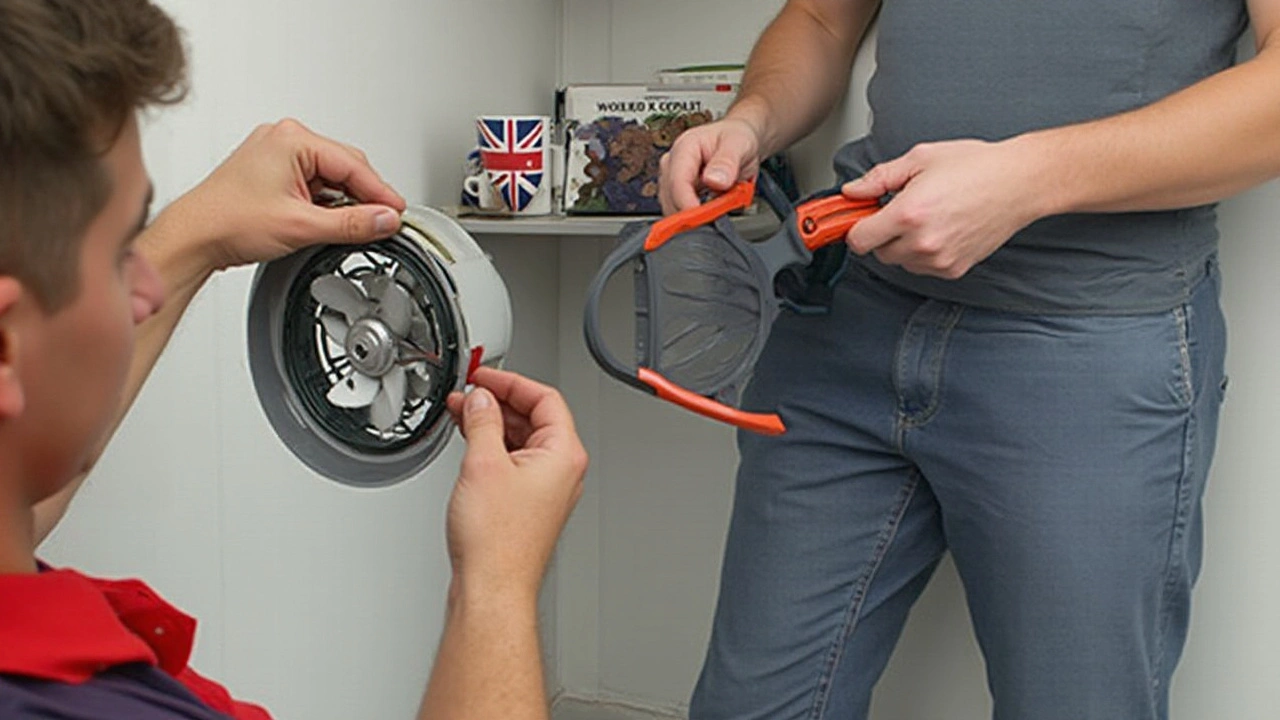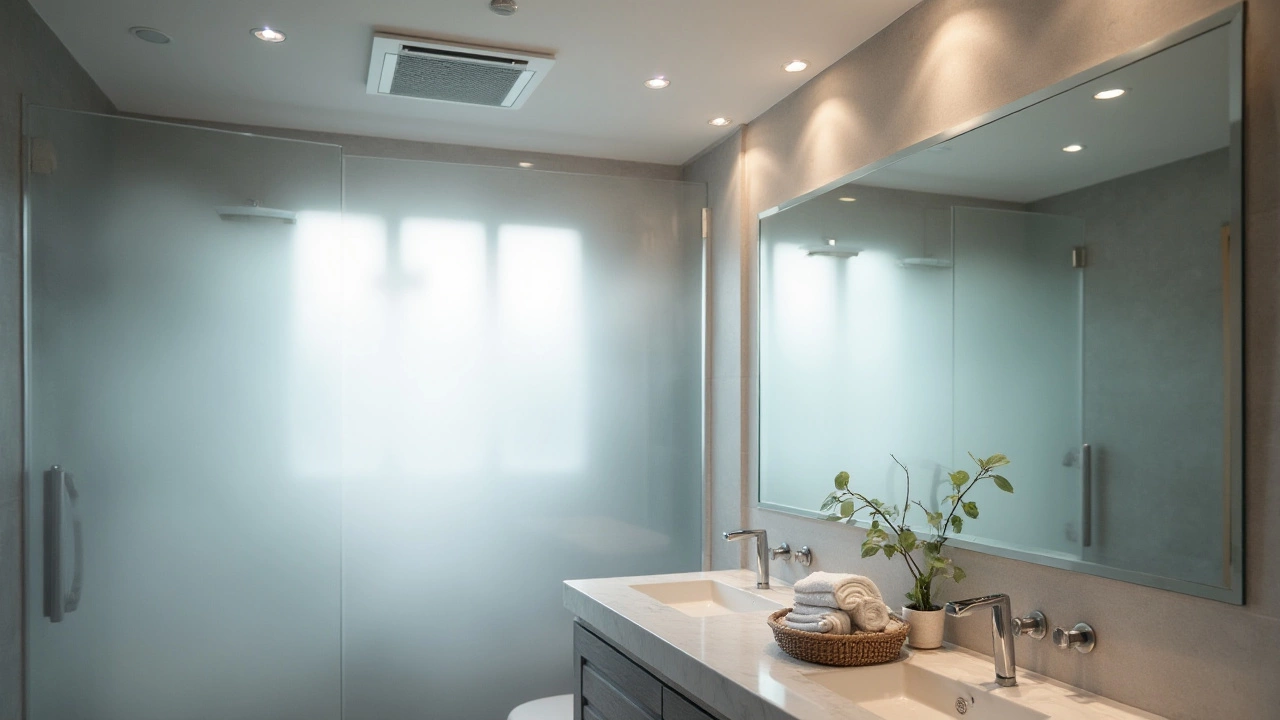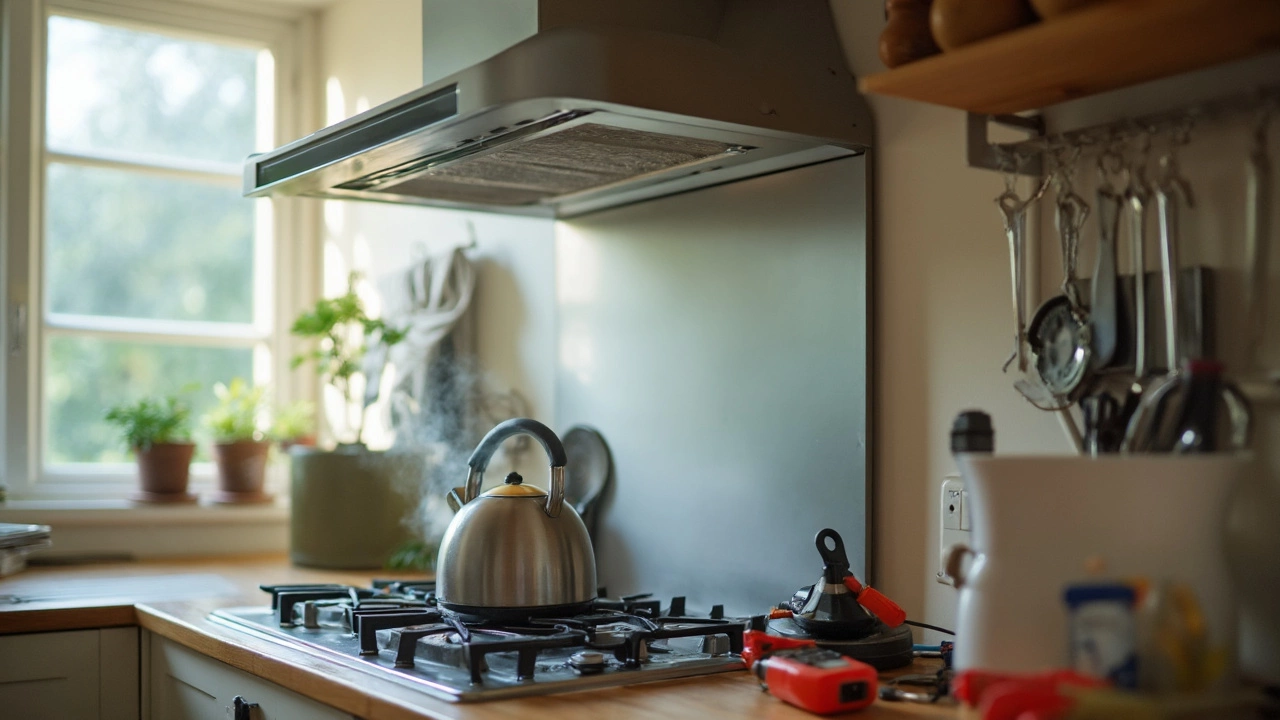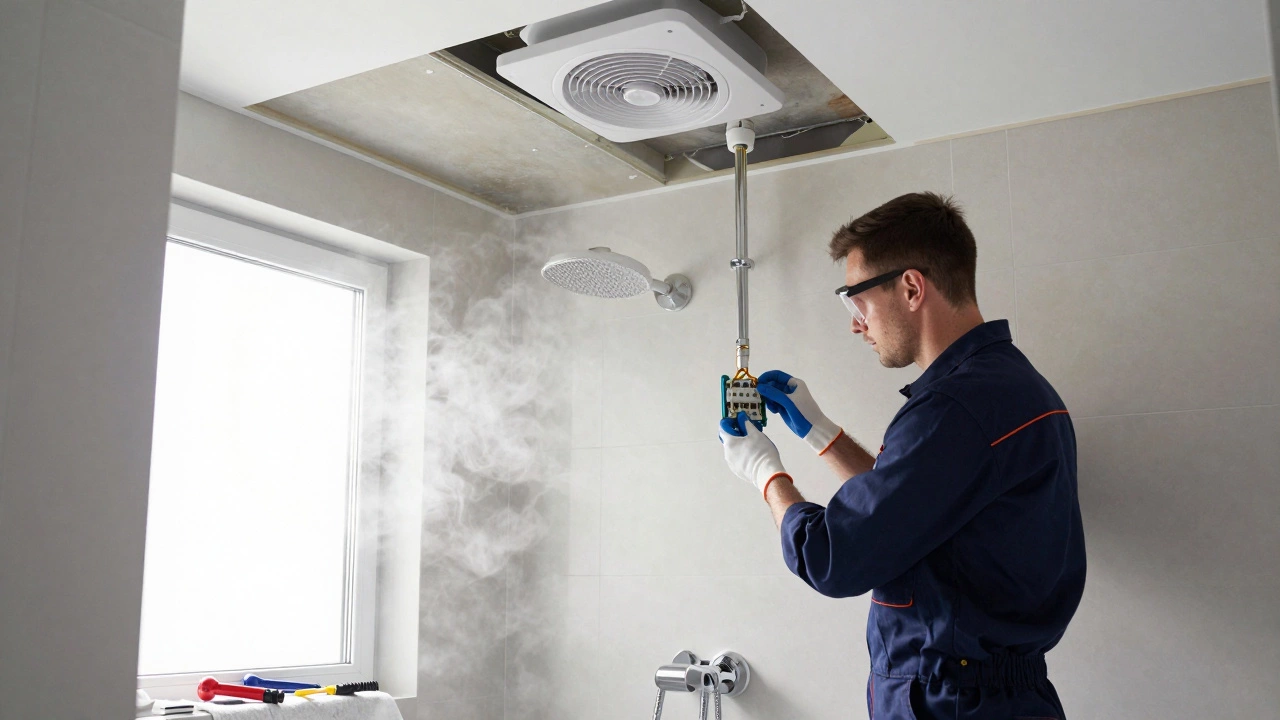
- 23 Oct 2024
- Gideon Thornton
- 0
Extractor fans are the unsung heroes of modern kitchens and bathrooms, diligently working to whisk away steam, smoke, and unwelcome odors. But what happens when these tireless machines suddenly stop? You’re left with lingering odors and the risk of mold buildup. Thankfully, with a bit of know-how, you can often get them back to working order without too much hassle.
Before you throw in the towel and call in an expert, let’s delve into some straightforward steps that could save you both time and money. We’ll explore everything from ensuring that the fan is plugged in and receiving power, to checking for physical obstructions and more complex issues like electrical failures. By the end, you’ll have a clearer idea of what might be causing the problem and how to address it, possibly extending the life of your fan.
- Recognizing Common Symptoms of Faulty Fans
- Checking Power Supply and Connections
- Inspecting Fan Blades and Housing for Obstructions
- Addressing Electrical and Mechanical Failures
- Regular Maintenance Tips for Longevity
- When to Call a Professional
Recognizing Common Symptoms of Faulty Fans
When an extractor fan isn't performing at its best, it doesn't always scream out its problems. Instead, it tends to whisper troubles in the form of subtle signs, which, if detected early, can spare you from larger inconveniences. One crucial aspect of evaluating your fan's health is being in tune with these symptoms. Let's explore some of the most common indicators that your extractor fan requires attention.
First, a sudden change in noise levels often heralds trouble. Typically, most extractor fans emit a consistent hum when operating normally. Any deviation from this norm—be it an unexpected silence or an irksome clatter—could signify a mechanical issue or an obstruction. Imagine you're in a library feasting on silence, when suddenly someone starts drumming on the table. Annoying, right? Now think of your fan. If it starts sounding like it has a band inside it, it might be crying out for help with its blades, perhaps due to loose parts or a foreign object stuck somewhere.
Next on the checklist is the efficiency in removing steam, smoke, and odors from the kitchen or bathroom. One should notice if the fan seems to have lost its sucking prowess. Should smoke linger around longer than usual after a cooking session with your favorite, yet smoky, grilled cheese sandwich, the fan isn't doing its job effectively. This loss of performance might mean the motor is fading or that ducts are blocked. Speaking of which, another point to add is related to airflow issues, which one typically checks by observing the speed at which air exits the vent.
As reported by Home Improvement Magazine, "Recognizing early signs of fan malfunction can save homeowners up to 40% in repair costs if addressed promptly."
Additionally, strange odors coming from the fan itself can also signal a problem. Given that the primary purpose of your extractor fan is to dispel unwanted smells, the last thing you need is the fan becoming a source of them. This can result from accumulated grease or dust particles, which are indicators of a need for cleaning or possible motor burnout. It's funny, isn't it, how the mechanism meant to eliminate smells can sometimes become the culprit?
Lastly, if the fan's operation is interrupted or if there are any signs of it stopping and starting at irregular intervals, there may be an electrical issue. This isn’t about tripping over the cord more than it's about ensuring that the fan isn't being starved of power and operates steadily when turned on. Frequent starts and stops could also mean that a reset of the system or replacement of electrical connections is needed. Knowing these symptoms might not only help in preventing further damage but also assists in understanding when it’s time to call in a professional.
Checking Power Supply and Connections
Let's face it: sometimes, the answer to a *non-functional extractor fan* is quite simple, but we tend to overlook it. The first task on your troubleshooting list should be to check the power supply. Believe it or not, a large percentage of electrical appliances fail to work due to a simple lack of power. Ensure the extractor fan is indeed plugged in. It sounds almost silly, but in the daily hustle and bustle, power cords can easily get nudged out of their sockets, especially in a busy *kitchen* setting.
Inspecting the Circuit Breaker
If your fan is plugged in and still isn't working, the next step is to head to the circuit breaker. There’s always the chance that the circuit has tripped, especially in older homes. Locate your home's circuit breaker panel and look for any switches that may have flipped to the 'off' position. If you do find one, gently switch it back on and see if the fan comes to life. Remember, safety first: never attempt to fiddle with the main breaker under any circumstances if you're not familiar with it.
For those wondering how circuit issues could affect their devices, it’s a common problem. Dr. Lisa Myers, an electrical engineering professor, states,
"Home circuit errors cause around 25% of all appliance failures. Regular checks can help prevent unexpected downtimes."Her insight underscores the importance of this step in your diagnostic process.
Checking Wall Switches and Connections
Following the breaker check, ensure the wall switch for your fan is in working order. It’s not uncommon for the switch itself to malfunction, or for wires behind it to become loose over time. If you feel comfortable, you can unscrew the switch plate and check the wiring. Confirm that all connections are tight and secure. Any looseness could disrupt the power flow and inhibit the fan from functioning correctly.
Finally, keep an eye out for unusual sounds or smells when the fan is on. These could either be indicative of an electrical problem or a hint that the fan is receiving power but is burdened by a different issue. It’s crucial to handle all electrical equipment with care, acknowledging both safety and functionality as intertwined focal points. If any step feels beyond your comfort zone, reaching out to a professional is the recommended course of action. They can handle your wiring with the expertise and caution it deserves, ensuring that your home remains both safe and efficient.

Inspecting Fan Blades and Housing for Obstructions
When dealing with a malfunctioning extractor fan, the first step often involves taking a good look inside. These fans operate in environments teeming with grease, dust, and debris. Over time, these particles accumulate, potentially obstructing the blades or jamming the entire mechanism. A blocked fan not only struggles to perform its duty effectively but can also lead to overheating, further complicating the situation.
Begin by disconnecting the power to ensure safety. This is crucial since working around electrical appliances, even ones as benign as a fan, requires heightened caution. Once safety is assured, remove the fan cover, which usually involves a few screws or a latch. Take care not to use excessive force, as many covers are made of fragile plastic that can easily crack under pressure.
Once exposed, inspect the blades carefully. With household fans, the blades are surprisingly resilient yet susceptible to grime buildup. Use a soft brush or a damp cloth to gently clean each blade. Pay attention to any signs of warping or damage, which might suggest that a blade needs replacing. It's fascinating how a simple wipe-down can often restore the fan's efficiency and prolong its lifespan.
If you notice any severe obstruction, like a piece of fabric or stubborn grime, you may need to apply some mild detergent. Avoid strong chemicals, as these can damage the components or leave harmful residues that become a nuisance over time. After cleaning, ensure the blades spin freely. An unbalanced or inhibited spinning action can indicate further issues, potentially with the motor housing or bearings.
Don't forget the housing itself. The space surrounding the blades often gathers dust, which can drastically impact airflow if left unchecked. A thorough cleaning of the housing ensures that air can move unobstructed. Regular maintenance, ideally every six months, keeps these components in tip-top shape. A small effort here goes a long way in ensuring your fan runs smoothly.
"The key to maintaining an extractor fan is consistent vigilance. Regular checks and cleanings can prevent most issues," says Tom Edwards, a professional electrician with over 20 years of experience in home appliance repairs.
For those interested, here's a practical statistic: about 75% of reported fan failures result from obstructions or neglected maintenance. This data serves as a reminder that a little proactive care can significantly impact efficiency and durability.
Addressing Electrical and Mechanical Failures
When your extractor fan refuses to start, or worse, gives out alarming sounds, electrical and mechanical failures could be the culprits. Tangled in wires and moving parts, these fans aren't immune to wear and tear. Often, electrical failures stem from a disrupted power supply or faulty wiring. If the fan won't spin, checking the power outlet with another device can be a simple first step. A tripped circuit breaker is a common mishap, so peep at your home's electrical panel to ensure the circuit hasn't flipped. Loose wires wreak havoc by severing the electrical pathway, leaving your fan powerless to function. In this case, carefully open the fan's casing (after unplugging it, of course) and inspect the connections for any visible disarray or scorching.
Beyond the electrical aspects, mechanical snags also plague extractor fans, particularly with the rotor or motor parts. Over time, grime build-up can jam these moving components. Regular cleaning not only aids optimal performance but also prevents breakdowns. For motors that emit a humming noise without movement, the issue might be a jammed rotor or a burnt-out motor, both calling for different solutions. Lubricating a stuck rotor or replacing a failed motor isn't as daunting as it sounds. You can get replacement parts from your fan's manufacturer or local hardware store. Before diving into repairs, consulting the user manual can guide you through fan-specific disassembly and troubleshooting procedures.
An experienced appliance repair professional once said, "The heart of the extractor fan is its motor, and like any heart, it needs care and attention to keep beating strong." This highlights the importance of maintaining the mechanical parts in top shape.
Sometimes, a mechanical failure can be due to a misbalanced fan blade causing excessive noise or diminished airflow. This is a subtle issue often overlooked; however, an unsteady blade can exacerbate wear on the motor. To remedy a noisy fan, verify that the blades are securely fastened and aligned. Replacement blades or balancing weights can restore harmony to the operation. Remember, if DIY fixes do not resolve the issue, it may be best to call in an electrician or appliance repair specialist. Wielding the correct tools and know-how, they can diagnose intricate problems with your fan's electrical components or mechanical structures, ensuring a more reliable fix.
Overall, addressing electrical and mechanical failures in fan troubleshooting covers a spectrum from checking power sources to engaging with internal fan components. Each step, although methodical, contributes substantially towards bringing your kitchen ventilation system back to life. Understanding and diagnosing these problems can drastically reduce downtime and eliminate the frustration associated with non-working extractor fans.

Regular Maintenance Tips for Longevity
Keeping your extractor fan in tip-top shape requires more than just occasional use. A little regular maintenance can significantly extend its lifespan and ensure it operates efficiently whenever you need it. The first step towards this goal is to maintain a cleaning routine. Dust and grease accumulation over time can clog the fan blades and the housing, reducing its efficiency. To prevent this, make it a habit to wipe down the fan grills and blades every couple of months. You can use a soft damp cloth with a gentle cleaner to avoid any abrasions on the surface.
Next, remember to inspect and clean the fan’s filters periodically. If your fan has a filter, it's likely working hard to trap grease and dust, which can lead to it becoming saturated with residue. If it's removable, take it out once a month and give it a thorough wash with warm soapy water. Let it dry completely before placing it back. This simple step can help maintain the airflow and prevent overheating of the fan motor.
Check Movable Parts and Lubricate
Beyond cleaning, another essential maintenance task involves checking the movable parts of the fan. With your kitchen’s climate and humidity, it’s possible for parts to become stiff or rusty. Periodically, take a closer look at the fan blades and motor shafts. Apply a small amount of light machine oil to these areas if you notice any resistance or scraping noises. This can help in keeping the fan troubleshooting to a minimum and also makes it run smoothly without unnecessary strain on the motor.
It’s also a good idea to conduct an inspection of the wiring connections and the switch. Loose or damaged wires can be a hazard and lead to inefficient operation or even failure. Before delving into this, ensure that the power to the unit is switched off at the mains to avoid any accidents. Gently pull on the wires to check that they are firmly connected and look for any signs of wear or burn marks.
“An ounce of prevention is worth a pound of cure.” This saying holds particularly true when it comes to the maintenance of kitchen appliances – Benjamin Franklin
Schedule Professional Check-Ups
Even with all this DIY care, it's wise to invite a professional to inspect your fan troubleshooting at least once a year. They can offer insights that might not be visible to the untrained eye and can also perform tests to ensure everything is in perfect working order. Not only does this provide peace of mind, but it also helps catch any potential issues early, preventing costly repairs down the line.
| Component | Maintenance Frequency |
|---|---|
| Fan Blades & Grilles | Every 2-3 months |
| Filters | Monthly |
| Wiring Checks | Annually |
| Professional Inspection | Annually |
A combination of regular hands-on care and professional expertise can go a long way in ensuring your extractor fan repair needs remain minimal, giving you a fresh and inviting kitchen environment every day.
When to Call a Professional
At times, despite your best efforts to troubleshoot and fix the extractor fan issues, you might find yourself at a standstill, unsure of the next step. It's perfectly normal. Sometimes, the complexity of the problem or the lack of proper tools and expertise makes it necessary to seek out a professional's touch. You might wonder when is the right time to pick up that phone. Well, if the problem goes beyond the typical DIY fixes such as checking power sources or removing blockages and becomes entangled in electrical circuitry, it might be wise to let an expert handle it to avoid potential hazards.
There are several signs that indicate the necessity for professional intervention. If your fan is consistently tripping circuit breakers, this points to a likely electrical short or overload, conditions that require specialized testing equipment and skills beyond usual DIY capabilities. Similarly, if you notice flickering lights or unusual noises that you've pinpointed to the fan unit, these could be indicative of internal faults or motor issues that could lead to more significant problems if not addressed correctly. It's more than just about getting the fan to work; it's about ensuring safety and long-term reliability.
Another red flag is an incomplete installation that may have been discovered during your own attempts at fixing. Improperly mounted fans or vent ducts that are not securely affixed not only hamper performance but can lead to severe structural damage if left unchecked. Call in a professional if there is even a hint of incorrect installation, as this is critical for both effectiveness and safety.
In terms of statistics, it's worth noting that according to a recent home maintenance study, about 30% of households needed professional services for electrical home appliances due to misdiagnosed issues that led to more significant complications. This showcases the importance of knowing when to step back and allow a trained technician to provide their expertise. As Albert Einstein famously said,
“The only source of knowledge is experience.”There's no shame in acknowledging that sometimes experience is what’s needed to ensure a job is done safely and correctly.
To make your search for a professional smoother, consider seeking out reviews and recommendations from trusted sources or platforms. It might be tempting to go with the cheapest option, but remember that quality often correlates with price in service sectors. Trust certified contractors who clearly communicate their qualifications and offer warranties for their work. A bit of homework beforehand can save a lot of heartache and financial resources in the long run, ensuring your kitchen ventilation system does not give you any further trouble.




